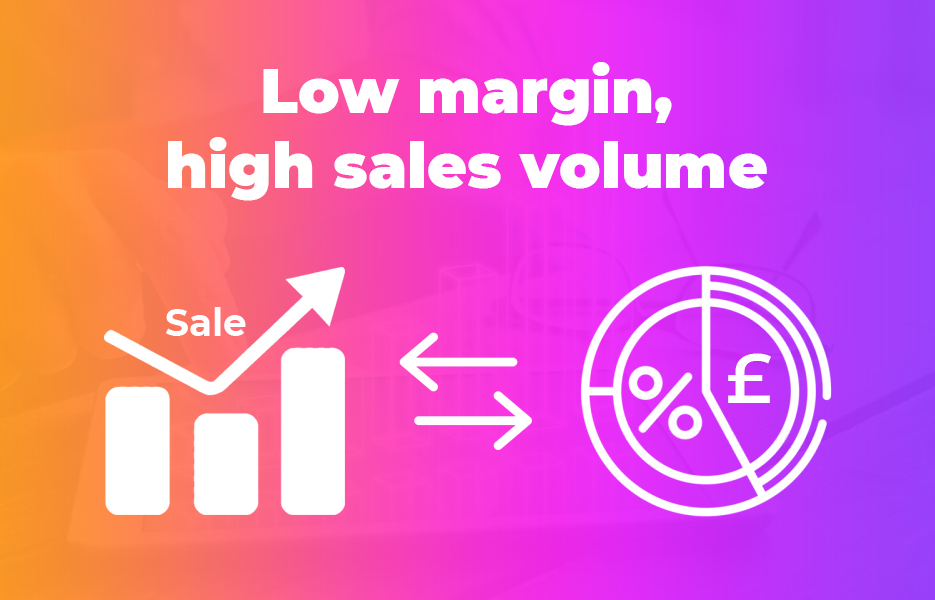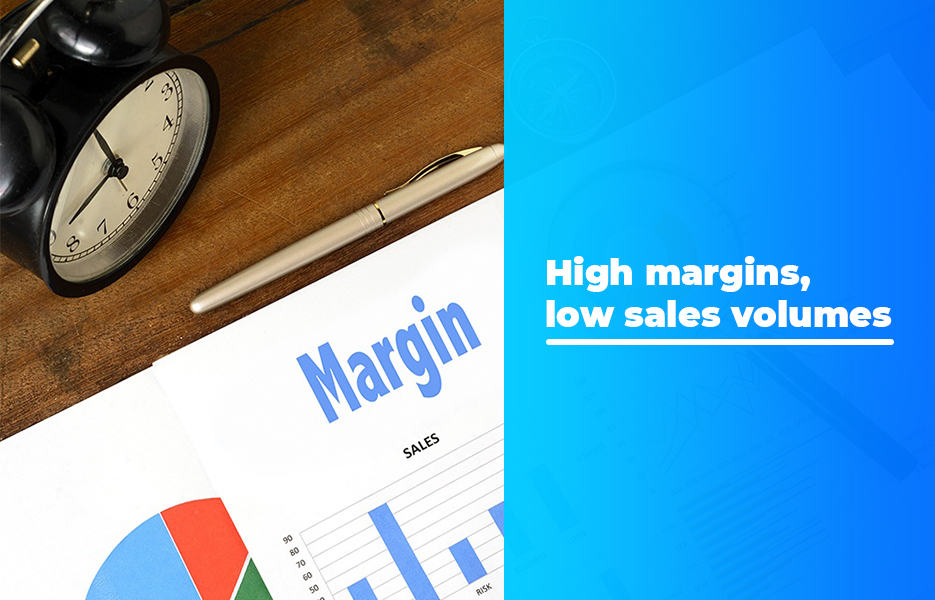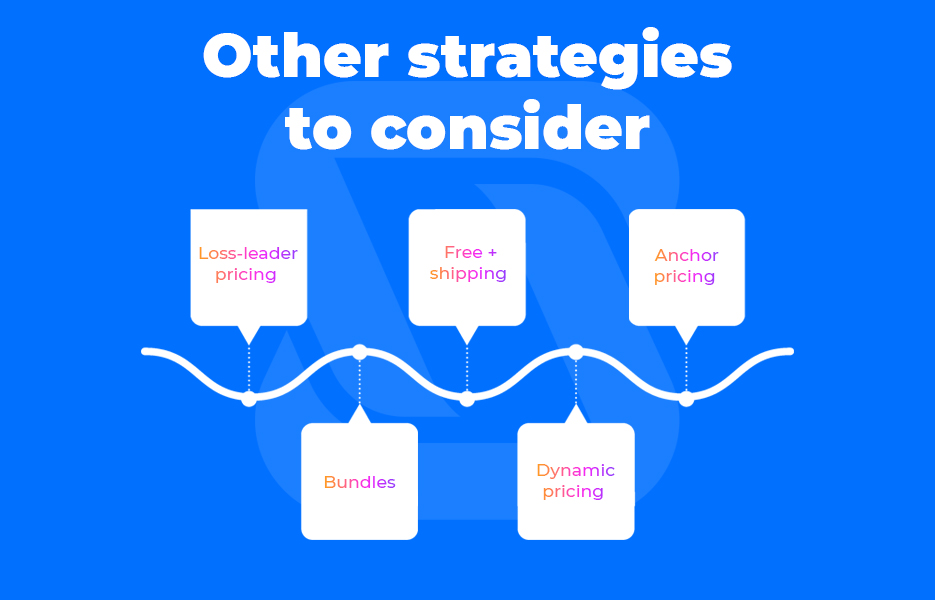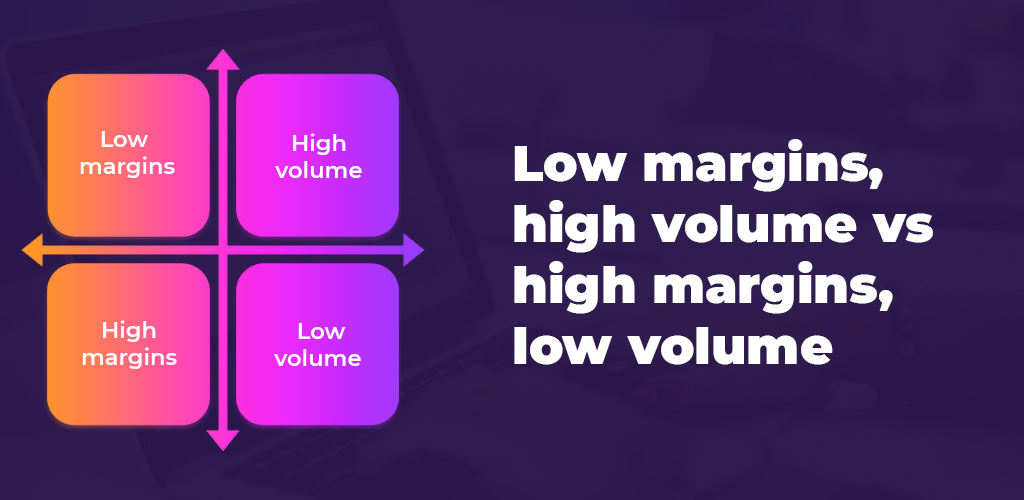Low margins, high volume vs high margins, low volume
Whether you’re new to the world of DropShipping, or you’re just new to Avasam, we’re starting a new series of blog posts that will help you go from beginner seller to power seller in no time. Today we’re going to be taking a look at whether it is better for you to sell loads of items with small profits, or you’re better off selling smaller numbers of items to make the same profits – or even bigger profits, if you hit on the right products. Which is better for your business, or should you have a mix of the two?
The debate

Let’s ask this question. Do you want to make one pound, one hundred times, or would you rather make one hundred pounds, just once? The effort it takes to market those products will be pretty much the same, and your costs are likely to be the same for both too. This applies to your products that you’re DropShipping, and there are benefits to both pricing models, so let’s take a look.
Low margin, high sales volume

No business sets out to deliberately make small profits. But there is an argument for selling a lot of items to a lot of customers, with a smaller profit margin.
Many DropShippers start out with the idea that they need to sell thousands of items every week in order to make enough profit to be able to go full time with their business. It makes sense at first, since you might think that if you keep your prices low, more people are likely to buy them. It works for big name retailers like Poundland, Aldi and Lidl – right? But the key here is that the likes of Poundland are already big, successful businesses, and they have the sort of spending power that means they are able to buy those products in bulk, and therefore they can afford to make smaller profit margins on each product they sell, because they are almost guaranteed to sell every item.
But when it comes to eCommerce there is so much competition on the different marketplaces, to use this approach you have to be ridiculously cheap to win customers over. If you’re selling products that are trending, you may be able to increase your margins a little, but generally your profit margins are going to end up being razor thin in order to compete with the big sellers – if you make any money on your items at all once you’ve taken into account your costs.
If your goal with your DropShipping business is to sell as many units as possible, then you might not be worried about your profit margins. But if your goal is to build your profits to a level that you can live on comfortably, then this approach isn’t likely to work for you.
- You’re likely to make sales from customers whose primary concern is price
- If you can sell on your website or elsewhere at a similar price to Amazon sellers, you’re likely to make sales
- You may need to continually attract new customers
High margins, low sales volumes

This approach might feel counter-intuitive at first, but it can be a much more time and cost effective strategy. By choosing items that are priced higher in the first place, you are going to be attracting a different type of customer – those who are more likely to pick the best item for their needs rather than automatically choosing the cheapest.
You might not sell as many of your more expensive items, but since it is going to cost you the same to market a more expensive item as it does to market something that costs less than £1, most of us would rather have a better return on our investment.
Use research to determine which products could yield you a better return on each one sold, then work on marketing them. Luxury items are more desirable, which usually means you will be able to achieve greater profit margins on each.
- Look for products where competition is smaller
- Marketing high value, high profit margin products takes the same amount of effort
- Depending on your products, converting new customers to repeat customers may be a challenge
Other strategies to consider

Low price, low profit margin and higher price and high profit aren’t the only strategies you can apply to the products that you sell. If you’re charging too much for a product, you’re pretty unlikely to make many sales, and even if you do manage to make sales, your returns and reviews are likely to reflect how your customers feel. Charge too little, and your profit margins get wiped out completely – which is probably not the outcome you’re looking for. Here are a few different strategies you can employ to get customers interested, and to actually buy, which in turn will help to boost your profits.
Loss-leader pricing
This is a widely used strategy in supermarkets, and we’re probably all aware of what it is, but let’s recap anyway – it is setting the price for a product so low that it makes very little, or no profit at all, with the hope that customers will make additional purchases while they are in store.
Used in eCommerce, the aim is simply to get people onto your website. Once people are there, the idea is that while they are considering the product you’re using as a loss-leader, they will have a look at the rest of your items, and (as in supermarkets) make extra purchases too.
This strategy is a good one to use when customers are going to need to buy something on a regular basis after their initial purchase. Many razor companies use this strategy very effectively to get people to buy into their brand – they sell the razor handle and first blade for a really low price. They know that the customer will then need to buy replacement blades thereafter, which leads to an increased opportunity to get them to buy into the brand further. Many people who buy replacement blades will also buy the brand’s shaving gel and aftershave, and even deodorant and other body care products.
There are two things to remember if you decide to use the loss-leading product strategy. Firstly, many of your customers for your loss-leading product will be new customers who have been tempted by price to give your business a go. That means providing excellent customer service – plenty of updates, and contacting them after their purchase to make sure they are happy with the product – so they are more likely to return and buy again. Secondly, use the loss leader approach with caution. The more often you use it, the less likely it will be that customers will buy from you at full price, since they will be used to your low prices – which means over time, your profit margins are going to fall.
Free + shipping
We’ve lost count of the number of times we have seen this strategy employed by sellers on the Wish marketplace. It is a great way to get customers interested in a product, but it can get annoying as a customer when you discover the postage ends up being more than another seller is selling the product for! It also means that your profit margins are likely to be pretty slim. You might be able to capitalise on customers making additional purchases, but like with loss-leader pricing, you have to make sure your customers don’t end up getting used to rock bottom prices.
The other thing you will need to be careful about is how much you charge for shipping. We’ve seen sellers price their shipping at the price that other sellers are selling their goods at – and customers feel duped by that. If you’re going to use this strategy, be upfront about your shipping costs. If the cost of shipping is applied at the checkout and it is for the same price as the customer can easily find elsewhere, you’re likely to see abandoned carts and poor reviews.
Anchor pricing
This isn’t so much of a pricing strategy per se, but if you’re selling below the recommended retail price, it can be a useful way to drive conversions. By telling customers how much they are likely to pay for the same product elsewhere, you’re telling them how much they will save with you compared to other sellers. This saves them time doing research, and means if they receive good service, they’re pretty likely to return. Just be sure to protect your profit margins.
Bundles
Bundles can be a great way to sell more items and increase your overall product. Going back to our razor example, you might bundle the razor handle and first blade with a shaving foam and post-shave balm for slightly less than they would cost to buy separately. You might make a slightly smaller profit on each item, but overall you will have made a bigger profit, since the customer has chosen to spend more with you. They feel they have got a great deal, and will have bought into the brand more, since they have got all the things they need in one go.
Dynamic pricing
You’re likely to be doing this intuitively anyway – but dynamic pricing is pricing your products in accordance with demand. You could change up prices of products depending on the time of year, or depending on how the trend for the item is going. If you’re changing prices depending on the time of the year, you might want to consider where your customers are. If you’re selling in New Zealand on Trade Me, and you’re selling seasonal products, you might find demand is the opposite to your UK customers due to the different hemispheres, so you may need to update your price on different marketplaces accordingly.
What’s the best approach?

There isn’t an approach that is guaranteed to be the right one – each business is different, and so the strategy for each business will be different too. Generally, we recommend starting with a mix of products with a big profit margin, and those with a smaller profit margin. This will help you to create decent numbers of sales, as well as increasing your overall profits.
For almost every pricing model, you’re going to need to spend time on your marketing, and building your reputation through your social media and your reviews. How you do that will depend on your customer research, knowing your niche and establishing the right mix of products for your target customer.
The beauty of DropShipping is that you can change your strategy at any time – updating your products, and your pricing when it becomes clear that one strategy or product works well, or isn’t working at all for you.
One-size fits all doesn’t apply to selling online – otherwise everyone would be using the same playbook! Finding the right mix of products for your business may be a challenge to start with, but over time you can refine your products to get the right balance.
- High profit margins means you don’t need to sell as many items to earn a good overall profit
- Low profit margins means you may be likely to sell more items
- Using a mix of seller strategies may suit your business better
- Your strategy isn’t set in stone – so keep assessing it and change it up when necessary
- Selling in different markets will provide you with a wider potential customer base
When you’re choosing your Avasam products and you’re building your business, having a good mix of products, both high profit and low profit margins is ideal. As you find what works and what doesn’t, switch things up! You have no obligation to keep selling a product, and there are no consequences for removing a product from your listings – so there is nothing to lose by trying a different strategy!




DropShip products from verified suppliers to diversify your inventory and scale your eCommerce business